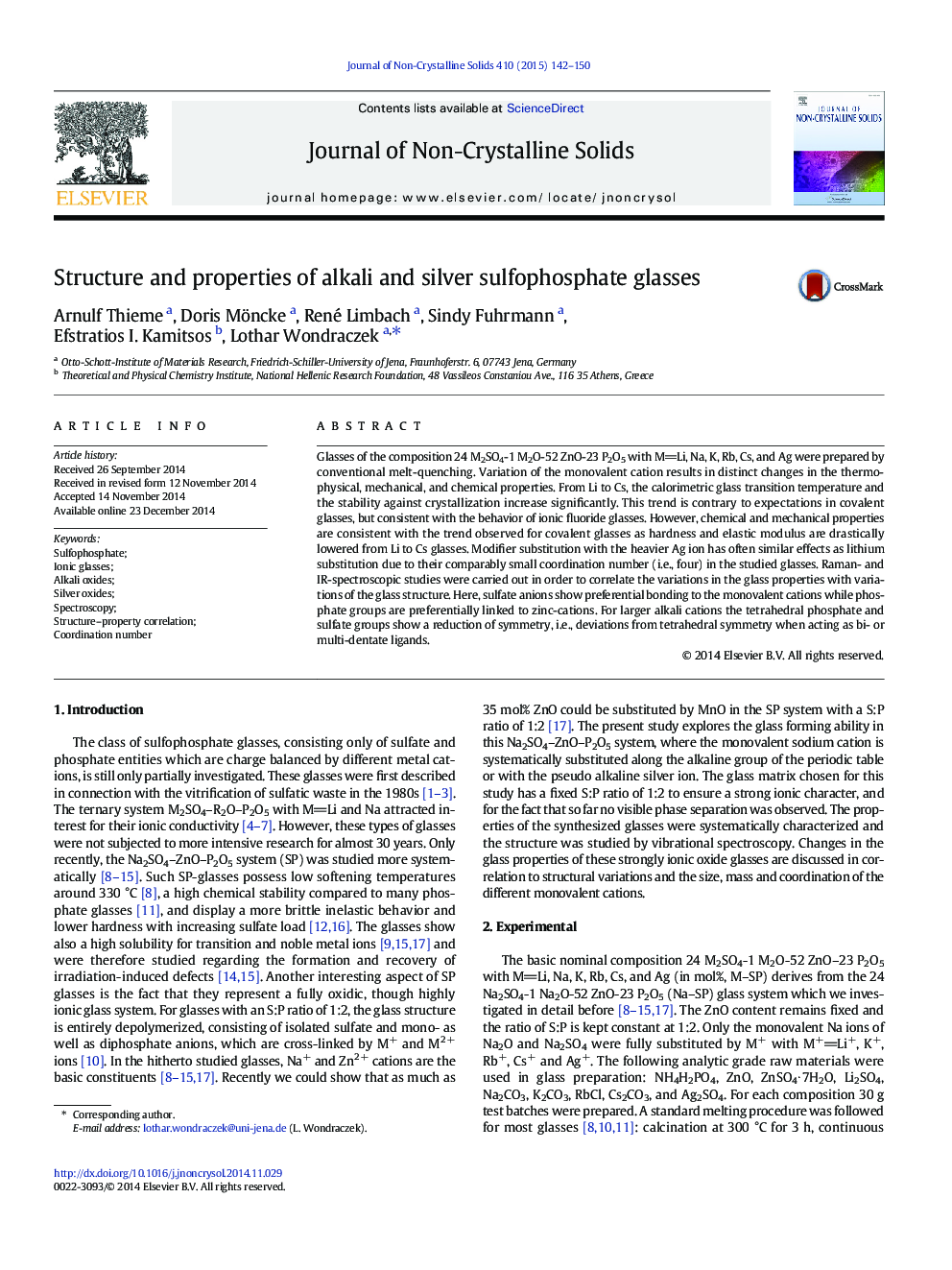| Article ID | Journal | Published Year | Pages | File Type |
|---|---|---|---|---|
| 1480817 | Journal of Non-Crystalline Solids | 2015 | 9 Pages |
•Substitution of modifier cations M+ in sulphophspahte glasses.•Mechanical properties weaken as the M–O bonds lose covalent character.•Transition temperature increases with coordination number and ionic radius of M+.•Large cations favor multi-dentate bonding of SO42 − (and PO43 −) anions.•Raman bands show distortions from Td symmetry for multi-dentate bonding.
Glasses of the composition 24 M2SO4-1 M2O-52 ZnO-23 P2O5 with MLi, Na, K, Rb, Cs, and Ag were prepared by conventional melt-quenching. Variation of the monovalent cation results in distinct changes in the thermo-physical, mechanical, and chemical properties. From Li to Cs, the calorimetric glass transition temperature and the stability against crystallization increase significantly. This trend is contrary to expectations in covalent glasses, but consistent with the behavior of ionic fluoride glasses. However, chemical and mechanical properties are consistent with the trend observed for covalent glasses as hardness and elastic modulus are drastically lowered from Li to Cs glasses. Modifier substitution with the heavier Ag ion has often similar effects as lithium substitution due to their comparably small coordination number (i.e., four) in the studied glasses. Raman- and IR-spectroscopic studies were carried out in order to correlate the variations in the glass properties with variations of the glass structure. Here, sulfate anions show preferential bonding to the monovalent cations while phosphate groups are preferentially linked to zinc-cations. For larger alkali cations the tetrahedral phosphate and sulfate groups show a reduction of symmetry, i.e., deviations from tetrahedral symmetry when acting as bi- or multi-dentate ligands.
